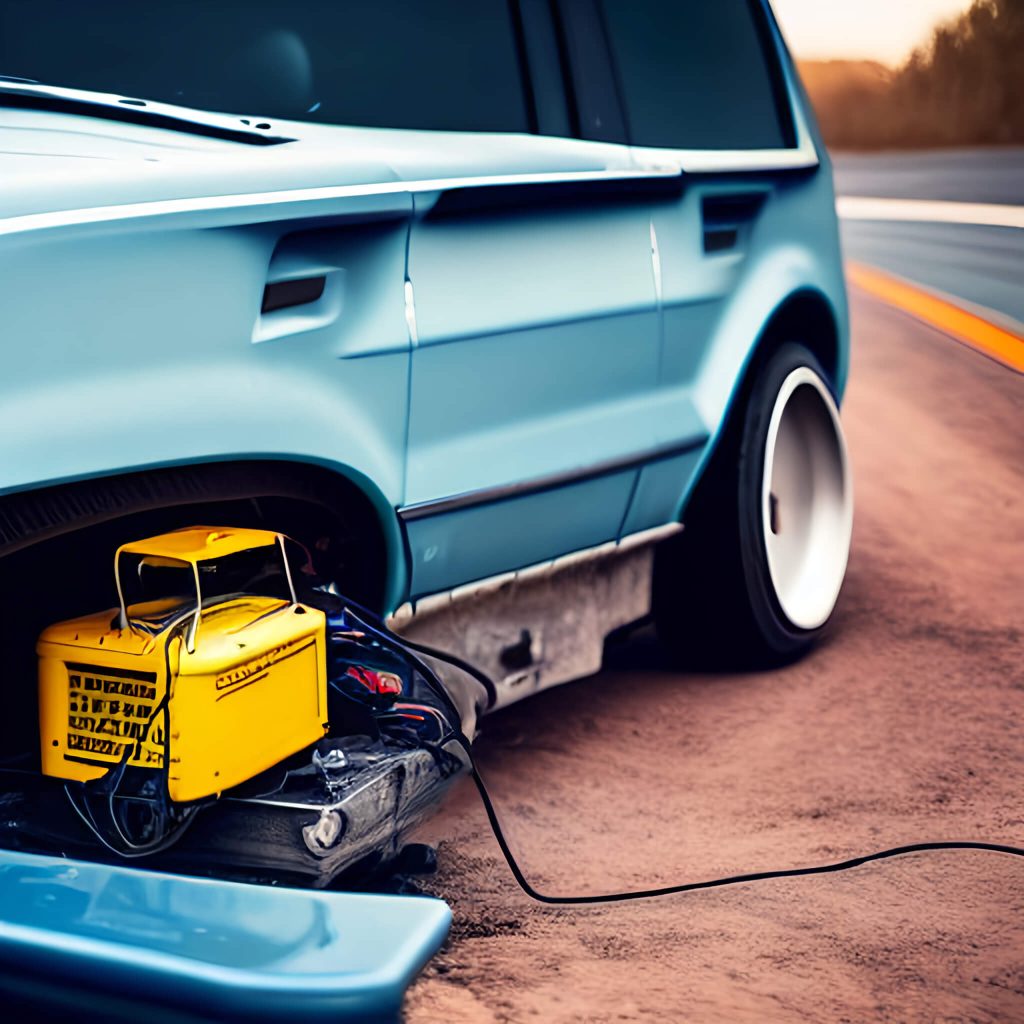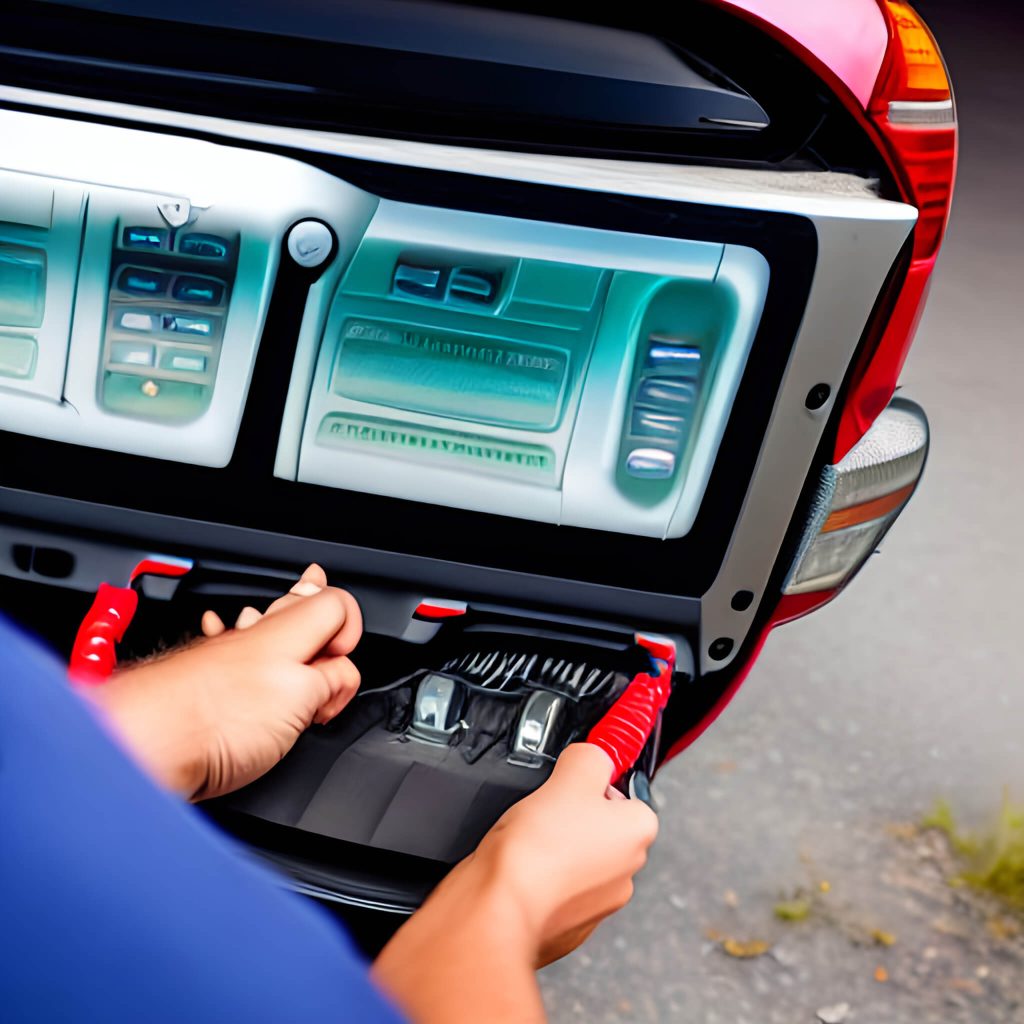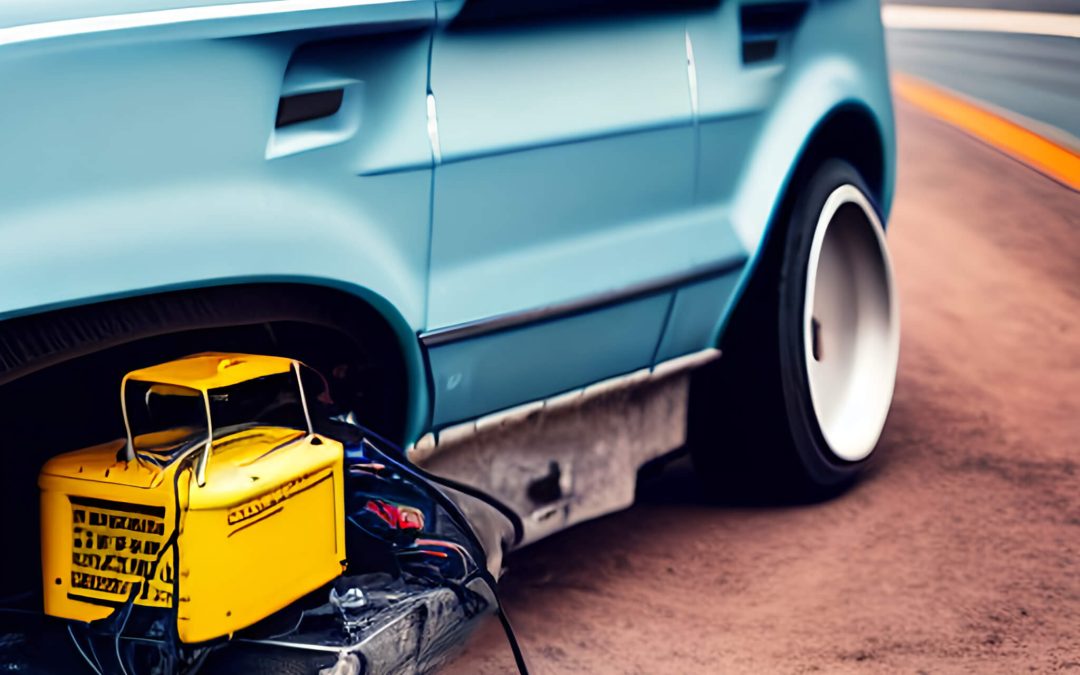Last Updated on May 14, 2023 by Mark S. Taylor
Have you ever found yourself in a situation where your car’s battery dies and there’s no other vehicle around to give you a jump-start? It can be frustrating and leave you feeling helpless. However, there are methods you can employ to start a car with a dead battery without another car. In this article, we will explore these methods and guide you through the process step by step, ensuring that you can get your car up and running again. So, let’s dive in!

Contents
Understanding a Dead Battery
Before we delve into the methods, let’s first understand what a dead battery is. A dead battery occurs when the charge in your car’s battery drops below a level where it can no longer provide the necessary power to start the engine. This can happen due to various reasons, such as leaving the lights on overnight or a faulty charging system. Whatever the cause, the result is the same: a car that won’t start.
Read More: What Does a Bad Starter Sound Like?
Precautions and Safety Measures
When dealing with car batteries, it’s important to exercise caution and follow safety measures to avoid any accidents or injuries. Here are a few precautions to keep in mind:
- Ensure the ignition is off and the keys are out of the ignition before attempting any procedure.
- Wear protective gloves and eye goggles to protect yourself from potential sparks and battery acid.
- Make sure the vehicles are parked on a flat surface and in park or neutral with the parking brake engaged.
- Keep flammable objects away from the battery and the engine compartment.
- Read the vehicle’s manual for any specific instructions or precautions.
Now that we have covered the precautions, let’s explore the methods you can use to start your car with a dead battery without another car.
Method 1: Using Jumper Cables and a Power Pack
Step 1: Gathering the necessary equipment
To start your car using this method, you will need the following equipment:
- Jumper cables
- A power pack or a portable jump starter
Step 2: Positioning the vehicles
Position the vehicle with the working battery close enough to the vehicle with the dead battery so that the jumper cables can reach both batteries comfortably. Ensure that both vehicles are turned off.
Step 3: Connecting the jumper cables (continued)
- Identify the positive (+) and negative (-) terminals on both batteries. They are usually marked with red (+) and black (-) symbols.
- Take the red jumper cable and connect one end to the positive (+) terminal of the dead battery.
- Connect the other end of the red cable to the positive (+) terminal of the working battery.
- Take the black jumper cable and connect one end to the negative (-) terminal of the working battery.
- Connect the other end of the black cable to a grounded metal surface on the engine block of the vehicle with the dead battery. Look for an unpainted metal part away from the battery.
Step 4: Starting the vehicle with the dead battery
- Ensure that all connections are secure and there are no loose cables.
- Start the vehicle with the working battery and let it run for a few minutes.
- Attempt to start the vehicle with the dead battery. If it doesn’t start, try turning the key multiple times, allowing short breaks in between to prevent overheating.
- Once the dead vehicle starts, keep it running for a while to allow the alternator to charge the battery.
Step 5: Disconnecting the cables
- Start with the black jumper cable connected to the grounded metal surface of the vehicle with the dead battery and remove it.
- Disconnect the black jumper cable from the negative (-) terminal of the working battery.
- Remove the red jumper cable from the positive (+) terminals of both batteries.
- Close the hoods of both vehicles.

Method 2: Push Starting the Car
If you find yourself without jumper cables or a power pack, push starting the car can be a viable option. Here’s how you can do it:
Step 1: Identifying a suitable location
Find a flat area with enough space to push the car safely. Avoid hills or busy roads.
Step 2: Preparing the vehicle
- Insert the key into the ignition and turn it to the “on” position.
- Press the clutch pedal (if it’s a manual transmission) or keep the gear in neutral (if it’s an automatic transmission).
Step 3: Pushing the car
- Get a few people to help you push the car from behind.
- Once the car gains momentum, release the clutch pedal (for manual transmission) or shift the gear to “drive” (for automatic transmission) and quickly press the accelerator pedal.
- If the engine starts, keep it running by pressing the accelerator pedal gently.
Step 4: Starting the engine
- Once the engine starts, release the accelerator pedal and let the car idle for a few minutes to charge the battery.
- Drive the car for at least 30 minutes to ensure the battery receives a full charge.
Method 3: Using a Portable Jump Starter
A portable jump starter is a handy device that can help you start a car with a dead battery without the need for another vehicle. Here’s how you can use it:
Step 1: Obtaining a portable jump starter
Purchase a portable jump starter from an automotive store or online. Make sure it is suitable for your vehicle.
Step 2: Connecting the jump starter
- Ensure that the portable jump starter is charged and turned off.
- Connect the positive (+) clamp of the jump starter to the positive (+) terminal of the dead battery.
- Connect the negative (-) clamp of the jump starter to a grounded metal surface on the engine block of the vehicle with the dead battery.
Step 3: Starting the car (continued)
- Turn on the portable jump starter and follow the manufacturer’s instructions for starting the vehicle.
- Once the car starts, let it run for a few minutes to charge the battery.
- Disconnect the jump starter from the battery following the reverse order of connection.
FAQs
- Can I start a car with a dead battery without another car?
- Yes, you can start a car with a dead battery using methods like jumper cables, push starting, or a portable jump starter.
- What if I don’t have access to jumper cables or a portable jump starter?
- If you don’t have access to these tools, you can try push starting the car if it has a manual transmission.
- Is it safe to push start a car?
- Push starting a car is generally safe as long as you follow the proper procedure and take necessary precautions.
- Can a dead battery be recharged?
- In some cases, a dead battery can be recharged using a battery charger. However, if the battery is old or damaged, it may need to be replaced.
- How often should I replace my car battery?
- Car batteries usually last around 3-5 years. However, factors such as extreme temperatures and frequent short trips can affect their lifespan. It’s recommended to have your battery tested regularly and replace it when necessary.
Conclusion
Starting a car with a dead battery without another car is possible with the right methods and precautions. Whether you have jumper cables and a power pack, can push start the car, or have a portable jump starter, these techniques can help you get back on the road. Remember to prioritize safety and follow the proper steps to avoid any mishaps. By being prepared and knowledgeable, you can tackle a dead battery situation with confidence.
Read More: How To Remove and Install A Car Battery

